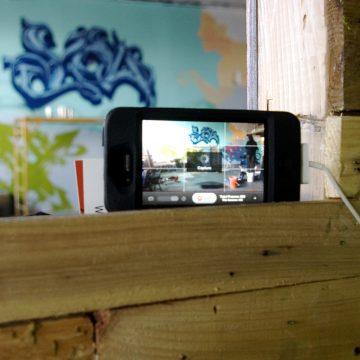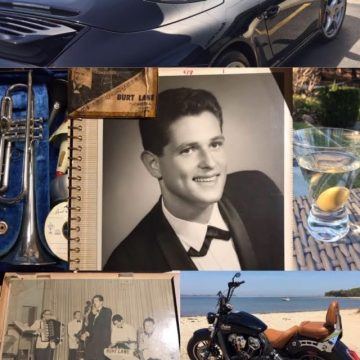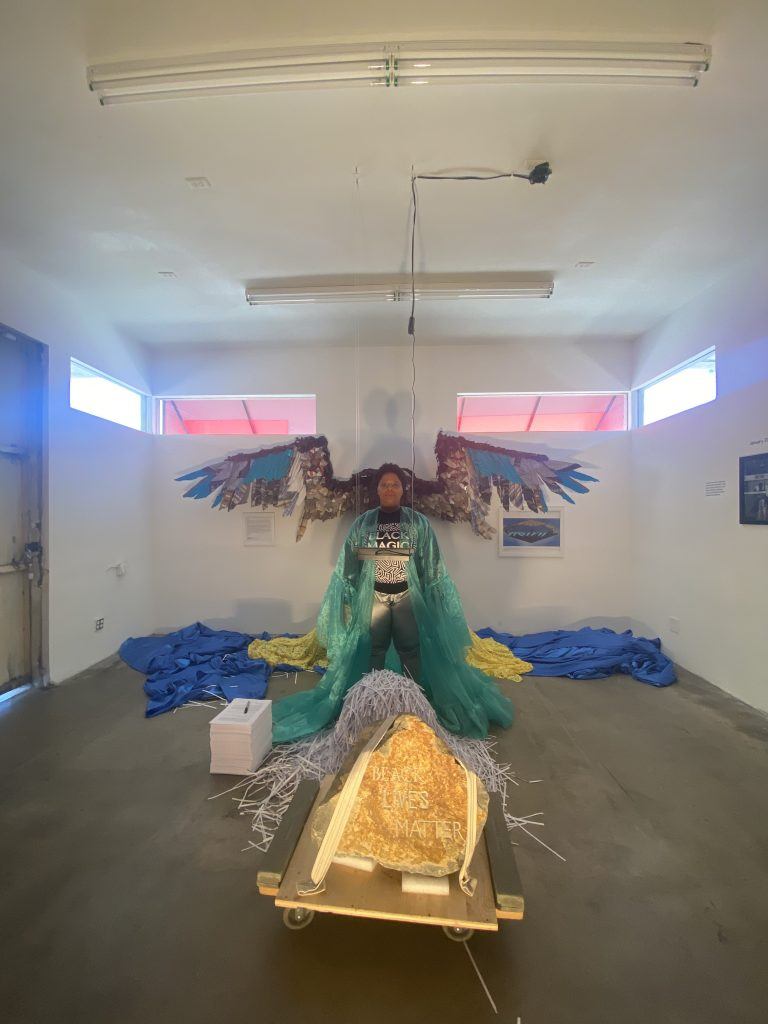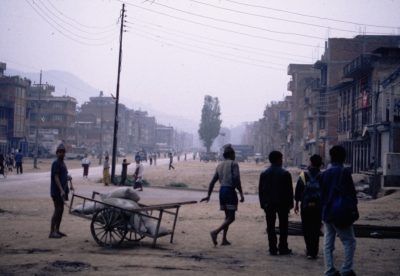by Bill Benzon
How do we get there from here? Evolution, revolution, or revolution through evolution? I don’t know, but as the smart kids are saying these days, I have my priors. As does everyone else.
A movement begins
Back in July 2019 Patrick Collison and Tyler Cowen called for a science of progress in an article in The Atlantic. The article generated a fair response, some in favor, some pushing back – Collison has collected some of the responses here – and people have begun conversing and gathering around the idea of progress studies. The purpose of this post is to take a quick look at what has been going on and a somewhat
more considered look at what needs to happen if an interest in progress studies is to yield discernible progress.

Let’s begin with a passage from Collison and Cowen, “We Need a New Science of Progress”:
By “progress,” we mean the combination of economic, technological, scientific, cultural, and organizational advancement that has transformed our lives and raised standards of living over the past couple of centuries. For a number of reasons, there is no broad-based intellectual movement focused on understanding the dynamics of progress, or targeting the deeper goal of speeding it up. We believe that it deserves a dedicated field of study. We suggest inaugurating the discipline of “Progress Studies.”
Before digging into what Progress Studies would entail, it’s worth noting that we still need a lot of progress. We haven’t yet cured all diseases; we don’t yet know how to solve climate change; we’re still a very long way from enabling most of the world’s population to live as comfortably as the wealthiest people do today; we don’t yet understand how best to predict or mitigate all kinds of natural disasters; we aren’t yet able to travel as cheaply and quickly as we’d like; we could be far better than we are at educating young people. The list of opportunities for improvement is still extremely long.
Mark their reach: cure all diseases, solve climate change, world’s population live comfortably, predict and mitigate natural disasters, travel cheaply, educate all young people well. The words are easy to comprehend, and those two paragraphs are relatively short. But they are talking about human life on earth, all of it, going forward. Can you get our mind around it, your hands? Really? It’s beyond my grasp.
They go on : “Progress Studies is closer to medicine than biology: The goal is to treat, not merely to understand.” Given their reach, if not their grasp, just what would treatment, the laying on of hands, entail? Read more »
 What brings me back to a painting is often a feeling, like a nagging muscle memory, of wanting not only to see, but to sense the painting’s facture. At the Met, I always return to Degas’s Portrait of a Woman in Gray (c. 1865), and the strange way in which the sitter’s black scarf seems to dominate the picture. Looking in closely, to the point where the weave of the canvas is visible and catching against the streaks of thinned oil, I find my wrist twitching with the desire to repeat the artist’s marks, anticipating the slight give of the fabric against the brushstroke, the soft friction of the bristles as they run out of pigment. It follows that my eyes’ movements are bound by this black shape that blends into the woman’s bonnet and resembles a figure holding an umbrella against the wind or wielding a scythe high in the air. Other portions of the painting seem secondary—the sketched-in right hand, the unfinished left eye—the whole composition just scaffolding for this burst of gesture. The tugging at my wrist lasts well after I leave the picture, each tightening of my fingers against the imaginary brush pulling the scarf back into focus.
What brings me back to a painting is often a feeling, like a nagging muscle memory, of wanting not only to see, but to sense the painting’s facture. At the Met, I always return to Degas’s Portrait of a Woman in Gray (c. 1865), and the strange way in which the sitter’s black scarf seems to dominate the picture. Looking in closely, to the point where the weave of the canvas is visible and catching against the streaks of thinned oil, I find my wrist twitching with the desire to repeat the artist’s marks, anticipating the slight give of the fabric against the brushstroke, the soft friction of the bristles as they run out of pigment. It follows that my eyes’ movements are bound by this black shape that blends into the woman’s bonnet and resembles a figure holding an umbrella against the wind or wielding a scythe high in the air. Other portions of the painting seem secondary—the sketched-in right hand, the unfinished left eye—the whole composition just scaffolding for this burst of gesture. The tugging at my wrist lasts well after I leave the picture, each tightening of my fingers against the imaginary brush pulling the scarf back into focus.
 The John Coltrane Quartet’s “Alabama” is a strange song, incongruous with the rest of the album on which it appears. Inserted into Coltrane’s 1964 album Live at Birdland, it’s a studio track that confounds the virtuosic post-bop bliss of the album’s first three tracks, live recordings that include a jittery rendition of Mongo Santamaria’s “Afro Blue.” All of that collapses when we reach the sunken melancholy of “Alabama.” We are far, now, from the cascades of sound that Coltrane introduced us to in “Giant Steps,” far from the sonic innovations and precise phrasing he refined in this album’s live recordings. Here, Coltrane’s saxophone sounds hoarse and enfeebled, until it collapses on the threshold of a hole in the ground.
The John Coltrane Quartet’s “Alabama” is a strange song, incongruous with the rest of the album on which it appears. Inserted into Coltrane’s 1964 album Live at Birdland, it’s a studio track that confounds the virtuosic post-bop bliss of the album’s first three tracks, live recordings that include a jittery rendition of Mongo Santamaria’s “Afro Blue.” All of that collapses when we reach the sunken melancholy of “Alabama.” We are far, now, from the cascades of sound that Coltrane introduced us to in “Giant Steps,” far from the sonic innovations and precise phrasing he refined in this album’s live recordings. Here, Coltrane’s saxophone sounds hoarse and enfeebled, until it collapses on the threshold of a hole in the ground. In a survey released at the end of May by the AP and the NORC Center for public affairs research, 49% of Americans said they intended to be vaccinated against the new coronavirus, 31% said they were unsure, and 20% said they would not get the vaccine.
In a survey released at the end of May by the AP and the NORC Center for public affairs research, 49% of Americans said they intended to be vaccinated against the new coronavirus, 31% said they were unsure, and 20% said they would not get the vaccine.





 Had enough of the 2020 election? Take heart, there are just 134 days left until Vote-If-You-Can Tuesday. That’s less time than it took Napoleon to march his Grande Armée into Russia, win several lightning victories, stall out, and then retreat through the brutal winter, with astronomical casualties, all the while inspiring the equally long
Had enough of the 2020 election? Take heart, there are just 134 days left until Vote-If-You-Can Tuesday. That’s less time than it took Napoleon to march his Grande Armée into Russia, win several lightning victories, stall out, and then retreat through the brutal winter, with astronomical casualties, all the while inspiring the equally long 





 Last time
Last time Though many in the U.S. are disoriented and disheartened by the lack of an effective federal response to the coronavirus pandemic, John Dewey, an American philosopher, psychologist and educator, would not have been surprised.
Though many in the U.S. are disoriented and disheartened by the lack of an effective federal response to the coronavirus pandemic, John Dewey, an American philosopher, psychologist and educator, would not have been surprised. This is not the right time for a bigger particle accelerator. But
This is not the right time for a bigger particle accelerator. But 